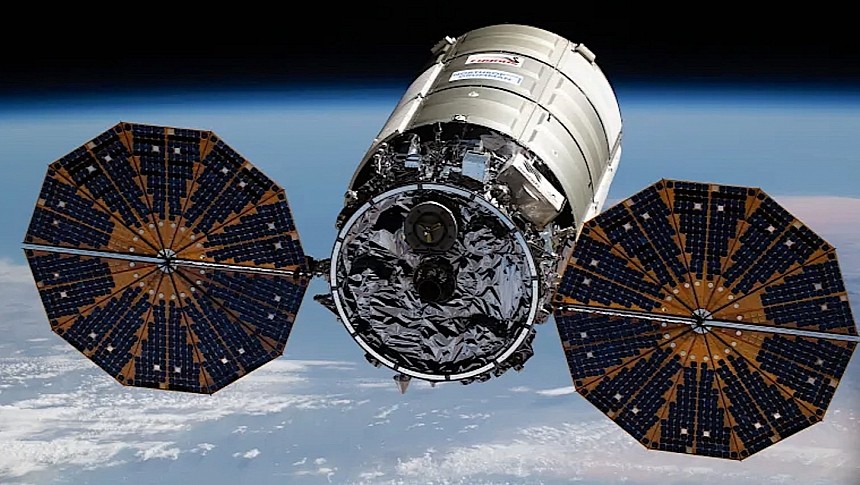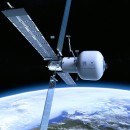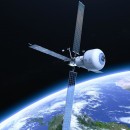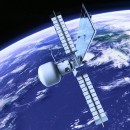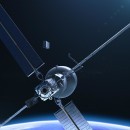The International Space Station (ISS) is currently enjoying its last years in orbit. At the end of the decade, it will be brought down, ending decades of unprecedented science performed in zero-g. No other space station is being planned by national and continental space agencies to replace it, but several private companies are working on their own orbital habitats.
One such company is Voyager Space, which is currently working with aerospace giant Airbus on something called the Starlab. Scheduled to enter service in 2028, thus sharing a near-Earth orbit with the ISS for a while, the Starlab is described as the "first-ever free-flying commercial space station."
The habitat will be a tad smaller than the ISS, with an interior space of 340 cubic meters (12,000 cubic feet). The space will be created by means of an inflatable habitat, and it will be able to house up to four people at a time.
The interior space will be divided into a biology lab, a plant habitation lab, a physical science and materials research lab, and an open workbench area. A power and propulsion element rated at 60 kW and a robotic arm complete the setup.
The work being performed in any of the areas mentioned above will be made possible thanks to materials brought up, just like it happens with the ISS, by supply spacecraft. We do know the station will be equipped with a metallic docking node for spaceships to connect to it, but until last week we had no info on what spacecraft could be used for resupply missions.
It was then that we learned the first spaceship selected to serve the needs of Starlab is the Cygnus. Made by Northrop Grumman, the ship had its first test flight in 2013, and conducted the first ISS resupply mission a year later.
Since then, the Cygnus flew a total of 19 missions to space, helping deliver 138,000 pounds (almost 63,000 kg) of cargo. It is a piece of tech that flies uncrewed, but requires human controllers to be positioned into place for docking with the ISS.
That's not what Voyager Sace wants for Starlab, and that's why Northrop Grumman is now working with the private space company on a "fully autonomous rendezvous and docking technology." Once the tech is ready, the Cygnus will be upgraded and will start serving the needs of the new station.
The current plan is to have the spaceship deliver pressurized cargo to Starlab. It will do so for the first five years of the station's life, but its role and use might be expanded to include laboratory duties, just like it did in some cases when docked to the ISS, or extra means of boost for Starlab's orbit change.
The companies involved made no mention about when we should expect an operational autonomous system for the Cygnus.
The habitat will be a tad smaller than the ISS, with an interior space of 340 cubic meters (12,000 cubic feet). The space will be created by means of an inflatable habitat, and it will be able to house up to four people at a time.
The interior space will be divided into a biology lab, a plant habitation lab, a physical science and materials research lab, and an open workbench area. A power and propulsion element rated at 60 kW and a robotic arm complete the setup.
The work being performed in any of the areas mentioned above will be made possible thanks to materials brought up, just like it happens with the ISS, by supply spacecraft. We do know the station will be equipped with a metallic docking node for spaceships to connect to it, but until last week we had no info on what spacecraft could be used for resupply missions.
It was then that we learned the first spaceship selected to serve the needs of Starlab is the Cygnus. Made by Northrop Grumman, the ship had its first test flight in 2013, and conducted the first ISS resupply mission a year later.
Since then, the Cygnus flew a total of 19 missions to space, helping deliver 138,000 pounds (almost 63,000 kg) of cargo. It is a piece of tech that flies uncrewed, but requires human controllers to be positioned into place for docking with the ISS.
That's not what Voyager Sace wants for Starlab, and that's why Northrop Grumman is now working with the private space company on a "fully autonomous rendezvous and docking technology." Once the tech is ready, the Cygnus will be upgraded and will start serving the needs of the new station.
The current plan is to have the spaceship deliver pressurized cargo to Starlab. It will do so for the first five years of the station's life, but its role and use might be expanded to include laboratory duties, just like it did in some cases when docked to the ISS, or extra means of boost for Starlab's orbit change.
The companies involved made no mention about when we should expect an operational autonomous system for the Cygnus.
